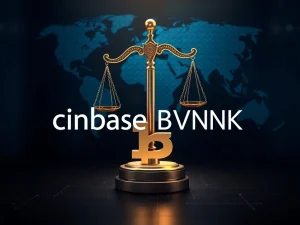Revealed: 10 Stablecoin Issuers Approved Under EU’s MiCA as Tether Remains Out

The European Union is forging ahead with its pioneering Markets in Crypto-Assets (MiCA) regulation, setting a global precedent for digital asset oversight. While this move underscores the EU’s commitment to fostering a secure and regulated crypto environment, questions are being raised about its potential impact on innovation and market competitiveness. A significant development under MiCA is the approval of 10 stablecoin issuers to operate within the EU. But in a surprising twist, the world’s largest stablecoin, Tether (USDT), is conspicuously absent from this list. What does this mean for the future of stablecoins in Europe and the broader crypto landscape? Let’s dive into the details.
Understanding EU’s MiCA Regulation and Stablecoin Approval
The EU’s MiCA framework is a comprehensive piece of legislation designed to regulate crypto-assets, including stablecoins, across all member states. It aims to provide clarity and consumer protection in the burgeoning crypto market. For stablecoin issuers, MiCA introduces stringent requirements related to capital reserves, operational transparency, and consumer rights. Achieving compliance with these regulations is a significant undertaking, but for those who succeed, it opens the door to operate legally within one of the world’s largest economic blocs.
Why is MiCA Regulation Important for Stablecoins?
- Enhanced Consumer Protection: MiCA mandates that stablecoin issuers maintain adequate reserves to back their tokens, ensuring that users can redeem their stablecoins at par value. This drastically reduces the risk of ‘bank runs’ and protects consumers from potential losses.
- Market Integrity and Stability: By regulating stablecoins, MiCA aims to mitigate risks to financial stability and market integrity. It sets rules against market manipulation and insider trading, fostering a fairer and more transparent market.
- Legal Clarity and Certainty: For stablecoin issuers and other crypto businesses, MiCA provides much-needed legal clarity. Operating under a clear regulatory framework reduces uncertainty and encourages investment and innovation within the EU.
- Global Standard Setting: As a leading economic power, the EU’s approach to stablecoin regulation is likely to influence regulatory frameworks worldwide. MiCA could become a benchmark for other jurisdictions grappling with crypto regulation.
The 10 Approved Stablecoin Issuers: Who Made the Cut?
While the specific names of the 10 stablecoin issuers approved under MiCA haven’t been officially publicized in detail, this development signals that several entities have successfully navigated the EU’s rigorous regulatory process. These are likely to be a mix of established financial institutions and dedicated crypto firms that have invested heavily in compliance and robust operational frameworks.
The approval process under MiCA is not trivial. Stablecoin issuers must demonstrate:
- Sufficient Capital Reserves: Issuers must hold reserves that are at least equal to the value of the stablecoins they have issued, often in the form of highly liquid and low-risk assets.
- Robust Governance and Risk Management: They need to have strong governance structures and risk management frameworks in place to ensure the stability and security of their operations.
- Transparency and Disclosure: Stablecoin issuers are required to be transparent about their operations, including the composition of their reserves and the mechanisms for redemption.
- Compliance with AML and KYC Regulations: Strict adherence to Anti-Money Laundering (AML) and Know Your Customer (KYC) regulations is mandatory to prevent illicit activities.
Meeting these criteria is a testament to the commitment of these 10 approved issuers to operating within a regulated environment and prioritizing user protection.
Tether Left Out: Why is USDT Missing?
The exclusion of Tether from the list of approved stablecoin issuers is perhaps the most striking aspect of this news. Tether’s USDT is the dominant stablecoin in the crypto market, with massive trading volumes and widespread use across exchanges and decentralized finance (DeFi) platforms. Its absence from the EU’s approved list raises some critical questions.
Possible Reasons for Tether’s Exclusion:
- Regulatory Scrutiny and Compliance Concerns: Tether has faced ongoing scrutiny regarding the composition and transparency of its reserves. Regulators globally have expressed concerns about whether USDT is truly fully backed by equivalent fiat currency reserves. MiCA’s stringent requirements may be challenging for Tether to meet in its current operational model.
- Jurisdictional Issues: Tether is incorporated in Hong Kong, and its relationship with EU regulatory bodies might be complex. Navigating MiCA compliance from outside the EU could present additional hurdles.
- Strategic Choice: It’s also possible that Tether has made a strategic decision not to seek MiCA approval at this stage. Perhaps they are evaluating the cost-benefit of compliance or focusing on other markets first. It’s important to note that being left out *now* doesn’t necessarily mean permanent exclusion. Tether could still pursue MiCA compliance in the future.
The absence of Tether from the approved list could have significant implications for the European crypto market. USDT’s widespread use means that many European crypto users and businesses rely on it for trading and liquidity. Its potential unavailability within the regulated EU framework could lead to shifts in market dynamics and the adoption of alternative stablecoins.
Impact and Future of Stablecoins in the EU
The EU’s MiCA regulation and the approval of these 10 stablecoin issuers are poised to reshape the European crypto landscape. While some argue that the stringent regulations might stifle innovation, others believe they are essential for fostering long-term growth and trust in the crypto market.
Potential Impacts:
- Rise of Euro-Denominated Stablecoins: MiCA could pave the way for the increased adoption of euro-denominated stablecoins. Issuers focused on EU compliance might prioritize EUR-backed stablecoins to cater to the European market.
- Increased Institutional Adoption: The regulatory clarity provided by MiCA could encourage greater institutional investment in stablecoins and the broader crypto market. Institutions are often hesitant to enter unregulated or vaguely regulated markets.
- Competition and Innovation: While Tether’s absence might initially seem like a setback, it could create opportunities for other stablecoin issuers to gain market share in Europe. This competition could drive innovation and lead to the development of more robust and transparent stablecoin offerings.
- Potential Market Fragmentation: If major stablecoins like USDT remain outside the EU regulatory framework, it could lead to market fragmentation, with different stablecoin ecosystems developing in different jurisdictions.
Conclusion: A New Era for Stablecoins in Europe?
The EU’s MiCA regulation and the initial approval of 10 stablecoin issuers mark a significant step towards mainstream adoption of digital assets in Europe. While the exclusion of Tether raises questions and potential short-term market adjustments, the long-term vision is clear: the EU aims to create a regulated, secure, and trustworthy environment for stablecoins and the broader crypto industry. Whether this approach will truly balance regulation with innovation remains to be seen. However, it undeniably sets a powerful precedent and signals a new era for stablecoins within the European Union.
As the crypto landscape continues to evolve, monitoring the impact of MiCA and the strategies of both approved and unapproved stablecoin issuers will be crucial for understanding the future trajectory of digital currencies in Europe and beyond. The EU’s bold move could very well redefine the global stablecoin market and set the stage for a more regulated and, hopefully, more stable digital financial future.







